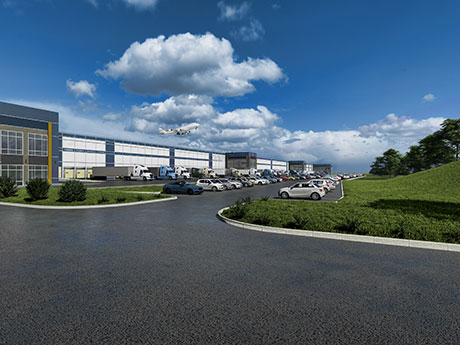By James Young, JLL
Through 2023 and 2024, JLL industrial has seen a historically high number of new leases signed. JLL research saw positive absorption in the third quarter of 2024 at 48,200 square feet, primarily driven by the completion of owner-built projects. This activity, combined with existing occupier commitment to the region and record-high asking rents, points to a thriving market.
As the Milwaukee industrial market continues to grow its regional presence, there are a few factors that set it apart from its larger peer cities like Indianapolis or Minneapolis. In this article, we will discuss what is driving regional industrial activity and the market’s strong growth trajectory.

Industrial evolution
We continue to see wide expansion into the suburban market, though this has not always been the case. Relocating a tenant from an established urban industrial area to a suburban location was often challenging 15 years ago. Such a move could entail workforce relocation, warehouse closures and complex logistical changes that potentially risked business disruption.
Today, JLL research shows other large occupiers are not only retaining their spaces in the Milwaukee market but are also actively expanding into suburbs like Waukesha and Menomonee Falls. JLL is tracking 11 build-to-suit and owner-user projects (both expansions and new buildings) that are expected to be delivered in the next 12 months.
The market’s growth stems from a robust regional investor base that sees Milwaukee as a prime market for expansion, coupled with abundant land availability and easy access to major transportation routes.
This year’s development projects have focused on smaller, more adaptable industrial spaces, designed to meet contemporary tenant requirements, moving away from conventional large-scale warehouse structures. Such development is occurring in areas like Oconomowoc, a location that was earmarked for a regional mall project 15 years ago. Today, we are seeing a combination of retail and flex infrastructure as space has become much more tailored.
Managing between markets
Chicago’s economic impact, exemplified by Microsoft’s entry, largely fuels southeast Wisconsin’s market. Simultaneously, Milwaukee’s industrial sector is spurring growth in other Wisconsin submarkets. Submarket growth is mutually beneficial for Milwaukee and its peer markets throughout the state, drawing in new tenant and revenue opportunities for Wisconsin and the broader region.
There has been significant growth in Madison and the Fox Valley, with major corporations like Amazon and Georgia-Pacific initiating and recently completing major expansions. These regions are within a two-hour drive of Milwaukee, making it simple for collaboration. Growth in these submarkets will continue to drive demand in the northern markets and west corridor of Milwaukee.
Challenges in development
While expansion continues in the suburbs, community pushback can make it difficult for new industrial product to come to market. Some communities remain hesitant to allow new construction, and/or cannot sufficiently accommodate industrial growth due to lack of infrastructure.
That said, as residential development expands in outlying suburban areas, increasing their population, it creates potential for job growth. These new communities bring residents closer to industrial sites that were previously considered remote, reducing commute times.
Inflation, elevated interest rates and rising construction expenses are affecting the commercial real estate sector as a whole. Despite this, in the Milwaukee market, industrial tenants and property owners have demonstrated resilience, finding strategies to manage these economic challenges without significantly reducing their activity levels. Unlike the early 2000s, we’re not seeing an oversupply of product. Today, both lenders and borrowers exercise more caution in their dealings, adhering to solid financial principles and basing decisions on dependable market indicators.
As we evaluate how interest rate cuts will impact the market, I foresee these cuts only making the market more competitive. Owners will find a way to buy new product within an already tight inventory while maintaining a sound financial position.
Poised for growth
As we move through the remainder of the year and into 2025, we anticipate continued community support for Milwaukee’s regional expansion, while industrial leasing activity continues. Owner-user developments are steadily appearing each month, reflecting businesses’ ongoing investment in the region and their acknowledgment of the lasting value in local real estate assets.
Milwaukee’s strong labor force, excellent highway network and favorable business environment will sustain the industrial market’s success. The rapid growth of Milwaukee and its submarkets could lead to a significantly different footprint compared with past years. This transformation may enhance the region’s appeal to new property owners and tenants, ultimately fostering positive economic development in the area.
James Young is a senior vice president with JLL. This article originally appeared in the November 2024 issue of Heartland Real Estate Business magazine.


